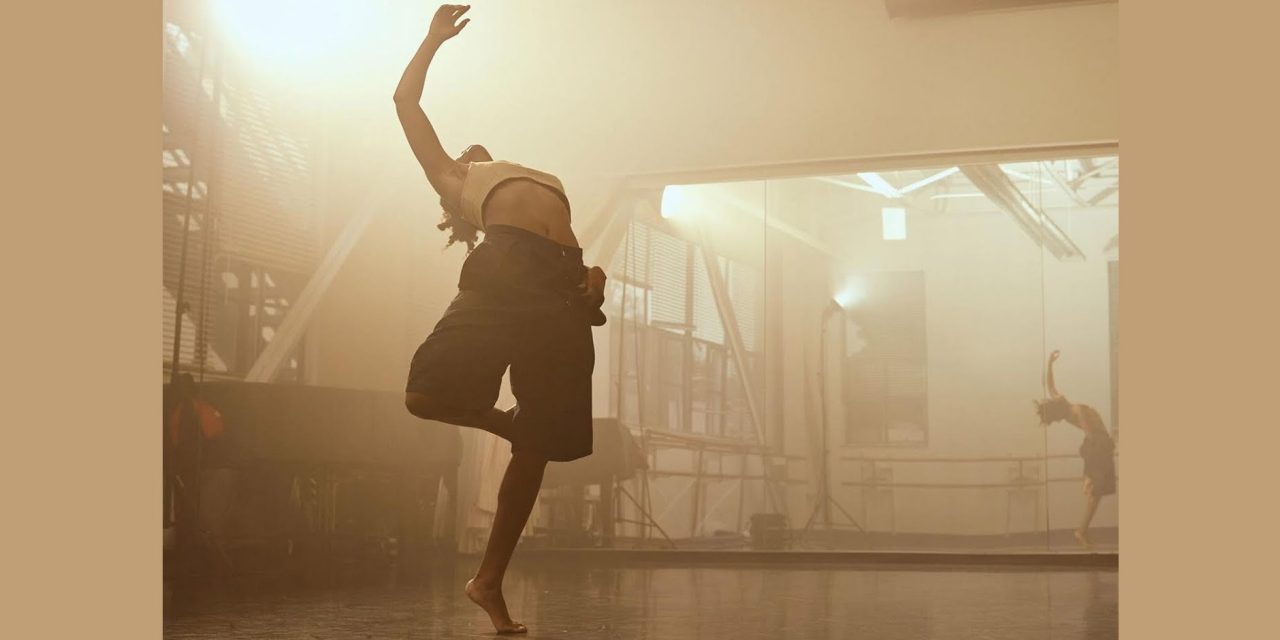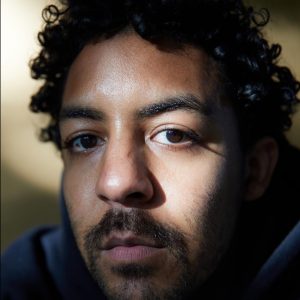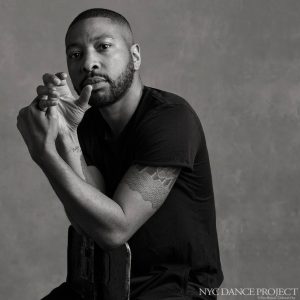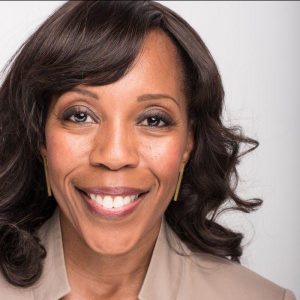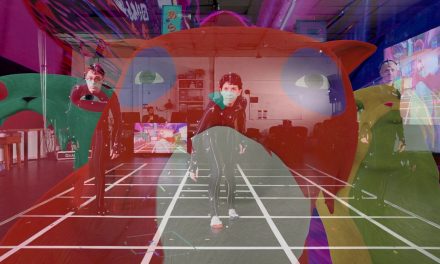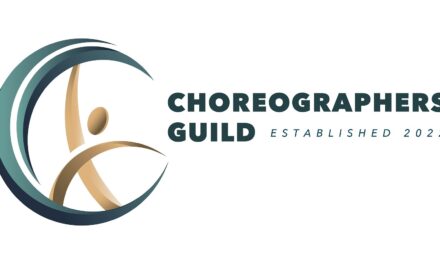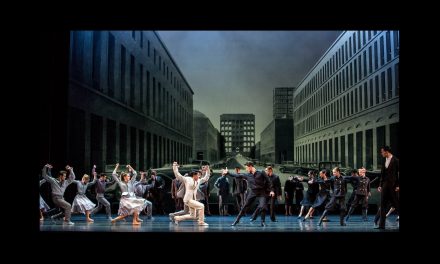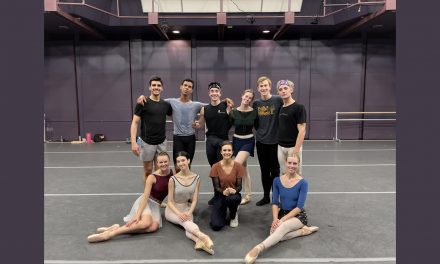Last week via NeueHouse, Los Angeles-based choreographer Chris Emile hosted a Zoom panel discussion on equity in the performing arts with MacArthur Fellow and Artistic Director of A.I.M. (Abraham in Motion) Kyle Abraham, and former Vice President and Director of Programming for The Music Center in Los Angeles, Renae Williams Niles. The conversation began with an overview of Abraham and Niles’ careers, and the ways in which they felt pressure to represent their Black counterpoints each time they set their work forward.
Abraham stepped into dance rather late (“late” in the industry means 17, in his case) and had his sights set on choreographing. After getting sidetracked, if you will, into a brief performing career, he took a break from dance and came back as a creator. He built his company, A.I.M., from a community he had gathered in New York, secured a booking agent in Sophie Myrtil-McCourty, and soon found himself touring to much acclaim.
Emile asked about Abraham’s commissioned works for other companies, noting that Abraham and Alonzo King stand out as some of the few Black choreographers who have choreographed for companies like Hubbard Street Dance Chicago and New York City Ballet.
“Sure, I’m one of how many brothers,” Abraham said. “But where are the sisters?”
His point: female representation in American dance leadership is lacking, especially when the field is so saturated with women. He went on to say that creating work on New York City Ballet, a predominately white institution, created a certain pressure for him as a Black male choreographer.
“I felt like I was responsible for a lot…I felt like maybe if I messed up, would another brother or sister get another chance? Maybe not,” he said.
He did say that he felt supported while setting The Runaway, especially by lighting designer Dan Scully (with whom he’s been working for 16 years) and City Ballet dancer Taylor Stanley, with whom he has an ongoing working relationship.
Emile also asked about Abraham’s choice to use Black artists’ music in The Runaway – the score features tracks by Jay-Z and Kanye West, as well as Nico Muhly and James Blake. Abraham explained that though he actually began playing classical music very young, he shouldn’t have to prove his background to choose the score for his own work.
“I think that’s part of Black tax, you always feel like you gotta prove something…and I accept some of that, because I think ultimately within that, it’s a lot of questioning within myself. To think about, ‘what do I want to say?’ And ‘how much power am I giving these other voices, eyes or ears to influence what I make?’”
At Hubbard Street, Abraham said, the atmosphere was a bit different, and he spoke openly with Artistic Director Glenn Edgerton. Abraham said he felt safe in the environment the company had established, and that Edgerton gave him free reign to choose music from a completely different genre, even coming off of the success of The Runaway’s popular score.
He shared that commissioned work holds many layers – whether he was creating a ‘pause’ piece (programmed right before intermission), a closer, etc., played a part in the sort of risk he would or could take.
Renae Williams-Niles joined the conversation then, speaking briefly on the many roles she has occupied in the dance industry. Emile shared accolades from Niles’ biography – just a few from a very long, impactful career of service to the performing arts – and asked her how it felt to hear those accomplishments read aloud.
“I feel very privileged to have been able to do certain things,” she explained, “but it’s also never enough… there’s just always more to be done, to make better.”
Emile asked Niles about her role and process in programming for an institution as large as The Music Center, where she worked for 12 seasons. Many external factors narrowed her options, she explained, including the role that the theater could play in conjunction with other dance in Los Angeles, the size of the venue (three thousand seats), the cost of crew, and the duration of a show’s run.
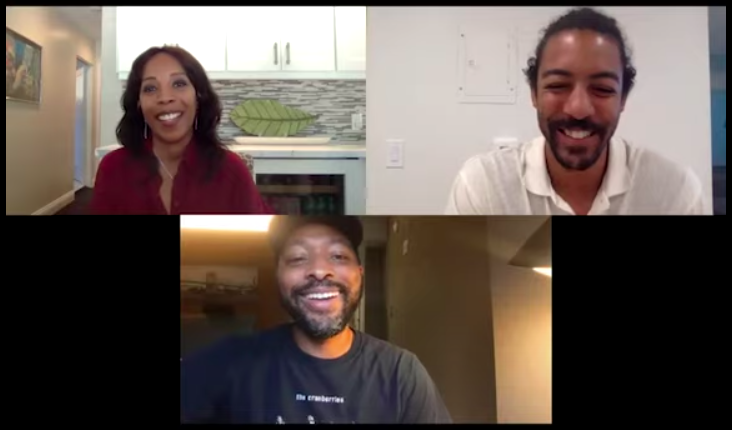
NeueHouse Panel – Top L to R Renae Williams-Niles, Chris Emile – Below Kyle Abraham – Video capture by Celine Kiner
“That really determined a lot of that decision-making, which was honestly for me, personally, frustrating. Because there were certain artists whose work was best experienced in a more intimate setting, whose work I felt strongly needed to be seen, particularly in Los Angeles,” she said.
Niles balanced this limitation by seeing as much dance as she could, then sharing work she believed in with her colleagues at other venues. She also took certain risks as she could, moving Complexions Contemporary Ballet from the Dorothy Chandler to the Ahmanson Theatre, presenting Shen Wei at Walt Disney Concert Hall in a work that required not only movement but paint onstage, mounting Moves After Dark with local artists in a split bill. She echoed Abraham’s earlier sentiments about the pressure in representing her race as a minority in these artistic spaces.
“I have always had a sense that I represent the totality of my race,” Niles said. “I can remember that as an eight-year-old in the middle of Knoxville, Tennessee…it became something that I carry, and I still do.”
She went on to share how often she was a minority among her colleagues in senior leadership, and how she began to feel even more responsibility to change the dynamics of equity when she assumed her role at USC’s Glorya Kaufman School of Dance.
“Once I was charged with co-leading our diversity, equity and inclusion work, that role and responsibility that I carry, particularly in this body, that shifted for me,” she said. “That level of clarity around the necessity of calling things out, of making things better for that next generation…that’s been very clear to me as a mother, but at a university, seeing these artists who…want to be valid and valued for what they want to give and their contribution…I definitely felt a stronger goal, of I need to make this better, and possible.”
Similarly, Emile shared that he had felt the overwhelming amount of white audience members as a touring dancer with various contemporary and contemporary ballet companies.
“I know my experience as a dancer: whenever we would tour…in any part of the country or abroad, the demographic of the audience was white, pretty much 95 percent,” he said.
Niles agreed, sharing that she felt a responsibility after working for LA County – she wanted the audience at The Music Center to look like the county did. That meant doing outreach at schools, salons, and more. When a large fraction of people calling for Alvin Ailey tickets didn’t know how to pronounce “Ailey,” she knew she was beginning to make a difference.
The conversation around equity and inclusivity continued, Emile asking how dance could become less insular, less elite, and above all, more accessible for all communities, especially in the face of the pandemic. With the current suspension of live art, Niles said that she hoped the spread of dance on film could widen an audience future live reopenings. Emile noted that collaborating with other disciplines could bring new audience members. Abraham agreed, observing that the vastness of Los Angeles and its reliance on smaller publications for criticism means it’s harder to get people to hear about the work, let alone get them to the show.
The trio discussed the value system in art criticism, and where dance lies amongst the other performing arts. While Abraham said he finds dance criticism valuable, he does believe that there are certain biases that need to be examined, as they do in all art criticism.
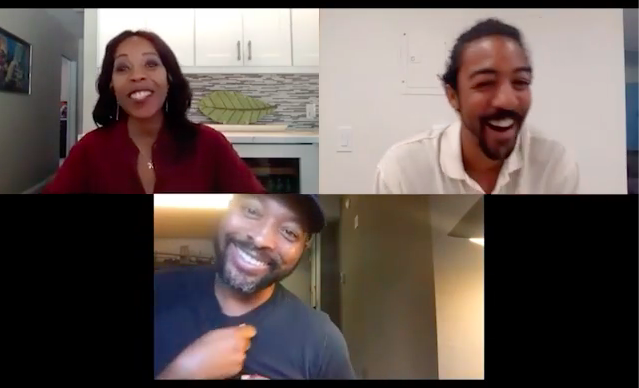
NeueHouse Panel – Top L to R Renae Williams-Niles, Chris Emile – Below Kyle Abraham – Video capture by Celine Kiner
“There’s always been conversation around histories, and culture, so how are people critiquing work when they may not know the point of entry or know anything about the culture?” he asked.
As this conversation led into the looming topic of social media and Instagram activism intertwining with arts organizations’ public stances, the three creatives discussed whether the social movement would lead to change within performing arts organizations themselves.
“As a parent, as someone who wants to see things be different and be better, I have to have a certain amount of hope that things are going to look different, but I also recognize my responsibility is not just to try to live and represent…but to also be more vocal, and to work to call out my own friends and colleagues,” Niles said.
In agreement, Abraham shared his desire to “invite versus indict,” and to “build on these conversations in a way that is healing for everyone. I definitely need that healing for myself.”
The full panel is available for viewing on NeueHouse’s blog page.
Written by Celine Kiner for LA Dance Chronicle.
Featured image:

